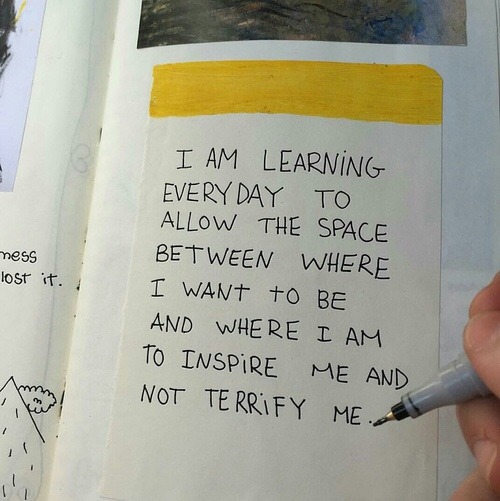Extraordinary Story Behind The Photo That Changed The Face Of AIDS




Extraordinary Story Behind the Photo That Changed the Face of AIDS
In November 1990 LIFE magazine published a photograph of a young man named David Kirby — his body wasted by AIDS, his gaze locked on something beyond this world — surrounded by anguished family members as he took his last breaths. The haunting image of Kirby on his death bed, taken by a journalism student named Therese Frare, quickly became the one photograph most powerfully identified with the HIV/AIDS epidemic that, by then, had seen millions of people infected (many of them unknowingly) around the globe.
(Continue Reading)
More Posts from Sordidsass-blog and Others






Taraji P.Henson gave a heartwarming speech after SAG Award win. She used this moment to appreciate three women, who changed the history and sent men into space, who didn’t complain about oppression they’ve experienced and thought about solutions. She called for unity , bacause that is what this film stands for. This film is about miracles that happen when we unite.
Source


Following Trauma
More than 2.6 million servicemen and women have deployed to Iraq or Afghanistan since September 11, 2001. Many veterans return home from their service with symptoms of post-traumatic stress, depression, chronic pain and traumatic brain injury. These symptoms are also common among civilian trauma survivors.
Now researchers from Harvard Medical School and other institutions will embark on a five-year-long project, the Aurora study, to better understand and treat these disorders. The research will utilize the efforts of 19 institutions and more than 40 scientists.
Trauma survivors will be enrolled in the study in the immediate aftermath of trauma and followed longitudinally for one year using sophisticated adaptive sampling methods to perform a comprehensive, state-of-the-art assessment of genomic, neuroimaging, physiologic, neurocognitive, psychophysical, behavioral and self-report markers.
In addition to its unparalleled scope, the study differs from previous studies in that it will assess neuropsychiatric effects of trauma broadly rather than focus on only one or a few diseases.
“We want to be patient-centered and not diagnosis-centered,” said Samuel McLean, lead principal investigator of the study and an emergency medical physician at the University of North Carolina at Chapel Hill.
Read more
Funding: The five-year-long project is funded by the National Institute of Mental Health.
Raise your voice in support of expanding federal funding for life-saving medical research by joining the AAMC’s advocacy community.




some positive doodles for my fellow psychotics
could be paranoia-inducing i think so please tag accordingly!



At the end of a national park rainbow, the gold you’ll find will be the stunning features of the landscape. Discover the national park treasure at the end of these colorful beauties. 🌈



History repeats.
me: *wants to live a minimalist life with little to no clutter*
also me: I'm keeping this math assignment from 5th grade I might need it later.
Trump is only two points ahead in Texas now. If you’re in Texas and vote third party or don’t vote this year, I will personally never forgive you for stealing the joy of watching the GOP freak out at Texas going blue from me.







Why does this still has to be a part of our life?

Chronic illness, chronic pain, and mental illnesses can create a sense of low energy in those who suffer from them.
The spoon theory is a way to discuss the use of energy in tasks as a kind of currency. People who do not have energy draining conditions have, in theory, infinite spoons to expend on whatever they please. People who have chronic conditions may awake with 10, 5, or 2 spoons on any given day.
-
 gabbadook liked this · 8 years ago
gabbadook liked this · 8 years ago -
 y-ve-tu-amor liked this · 8 years ago
y-ve-tu-amor liked this · 8 years ago -
 roarsharky liked this · 8 years ago
roarsharky liked this · 8 years ago -
 jennhoney liked this · 8 years ago
jennhoney liked this · 8 years ago -
 foundphotography liked this · 8 years ago
foundphotography liked this · 8 years ago -
 seaofloveandotherthings liked this · 8 years ago
seaofloveandotherthings liked this · 8 years ago -
 cronachenoiose reblogged this · 8 years ago
cronachenoiose reblogged this · 8 years ago -
 420gpa liked this · 8 years ago
420gpa liked this · 8 years ago -
 sordidsass-blog reblogged this · 8 years ago
sordidsass-blog reblogged this · 8 years ago -
 sordidsass-blog liked this · 8 years ago
sordidsass-blog liked this · 8 years ago -
 my-mind-is-just-a-mess reblogged this · 8 years ago
my-mind-is-just-a-mess reblogged this · 8 years ago -
 my-mind-is-just-a-mess liked this · 8 years ago
my-mind-is-just-a-mess liked this · 8 years ago -
 mme-patate liked this · 8 years ago
mme-patate liked this · 8 years ago -
 anocturnalmorningperson liked this · 8 years ago
anocturnalmorningperson liked this · 8 years ago -
 grassdotcom-blog reblogged this · 8 years ago
grassdotcom-blog reblogged this · 8 years ago -
 grassdotcom-blog liked this · 8 years ago
grassdotcom-blog liked this · 8 years ago -
 r2-d2-soon liked this · 8 years ago
r2-d2-soon liked this · 8 years ago -
 razadeluna liked this · 8 years ago
razadeluna liked this · 8 years ago -
 giudizi-universali liked this · 8 years ago
giudizi-universali liked this · 8 years ago -
 mrsequitone liked this · 8 years ago
mrsequitone liked this · 8 years ago -
 bobbycaputo reblogged this · 8 years ago
bobbycaputo reblogged this · 8 years ago
Struggling with mental illness after a traumatic event most likely caused by mental illness. Sexual Assault Survivor.
282 posts